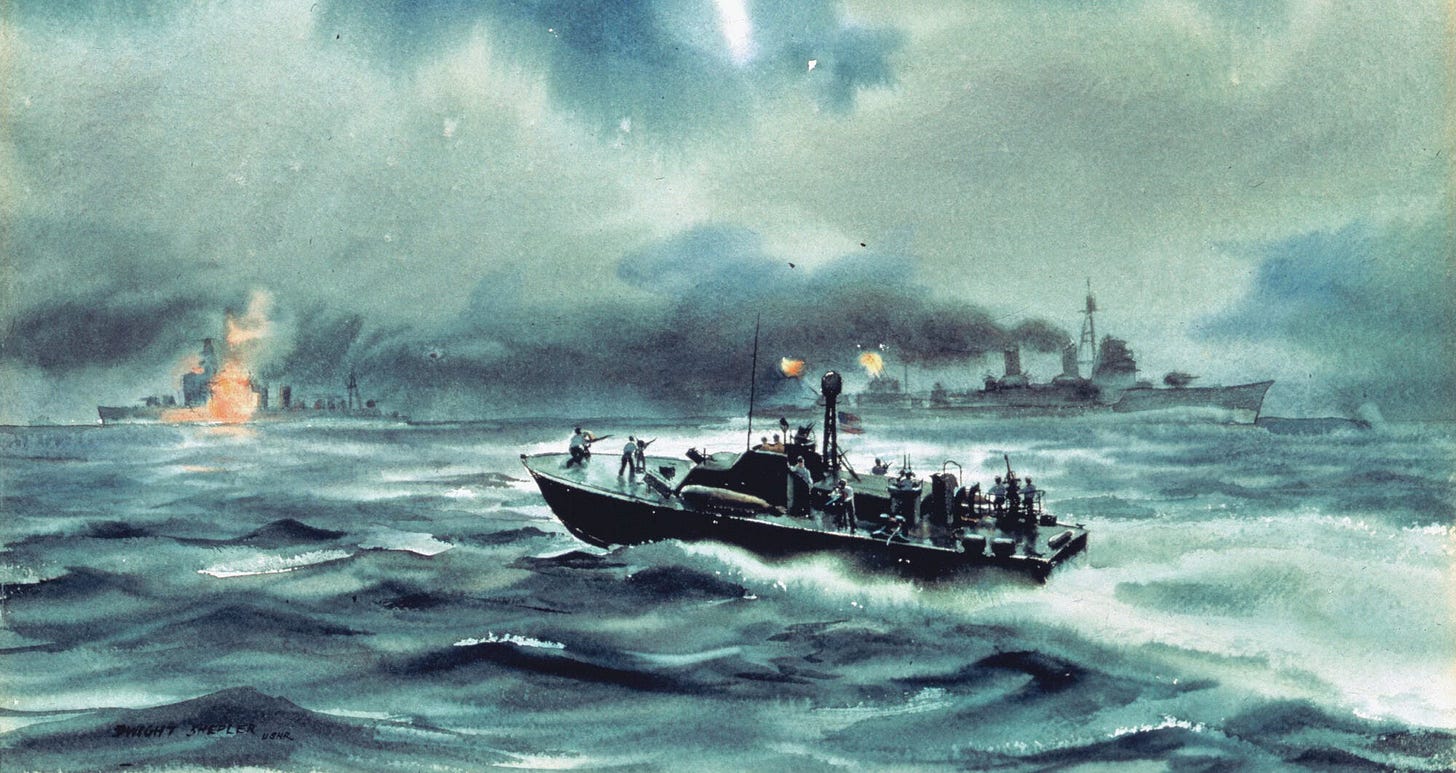The Pacific War in 1944
A selection of stories from coverage of the Pacific War over the last year - as the US becomes ascendant but Japanese resistance gets more desperate ...
US Marines are dive-bombed

You could always tell the Japanese bombers as they had a different sound to their engines and we ran over to our gun section. Everyone was in the slit trench and Navar and I couldn’t get in for lack of space. The bombs were starting to fall very close. Navar dove into a small shallow foxhole about the size of a coffin and eight or nine inches deep and I went into the one next to it. One of the bombs fell precisely on the fire control center hitting a large tree killing four of our guys and injuring two of the others.
Japanese death march begins
24th January 1944: Starving, diseased Japanese troops make a desperate retreat on New Guinea

The site was fouled by excrement left by the 1st Echelon that had camped here yesterday. Indeed, it was very difficult to find a clean place to put up a tent. However, when I observed the excrement, which consisted of green fibres and yellow viscid liquid, the soldiers appeared to be eating only grass or roots of trees of low food value.
D-Day in the Pacific
With, this assault came a strange irony. On the ends of the long assault line were stationed two old battleships, the California and the Tennessee. Fire power from these battleships was directed by the landing party on various trouble spots. On this assault, each ship fired 100 shells from their 14-inch guns. During the day before the invasion and on 'D' Day, they took some non-critical hits because they were so close to enemy guns. They did not mind. Admiral Nagumo's planes had destroyed these ships at Pearl Harbor. There, the California lost 98 and the Tennessee lost 5 sailors. On these ships, both the living and ghosts of the dead had come to even an old score with the admiral hiding in his bunker.
The Marines at Peleliu

“Fire at that near point,” the squad leader ordered. “Keep high.” Wingy fumbled with the belt and slide, trying to full-load. But he didn’t fire. He stood up straight and then fell over among the men. And he seemed to vanish. I don’t remember seeing Wingy again, but he must have still been in the amtrac. People and things dropped suddenly out of sight in action. Or at least the memory of them did. The squad leader and Buck began to feed and fire the machine gun.
Horror aboard USS Suwannee

I think there were about 30 of us, including two corpsmen, two stretcher bearers, and perhaps 25 wounded resulting from the action of the day before, mostly consisting of extensive burns, blast and fragmentation injuries, traumatic amputations, compound fractures, and multiple severe lacerations. About half the wounded were able to help themselves to some extent in dragging themselves about, but the remainder required stretchers to be moved.
The Battle of Leyte Gulf

The first sighting of the Japanese force was made by the radar operator on the patrol boat PT-131 at 22.15 hours. What had been sighted was probably the cruiser Mogami and the Japanese destroyers scouting ahead of the battleships.
Alerted to the approach of the enemy, the MTBs rushed into the attack, firing thirty-four torpedoes at the Japanese ships. Darkness, rain squalls and interference from the enemy's gunfire led to inaccuracy, but seven strikes were claimed. The Japanese opened fire with all their weapons, illuminating the MTBs with searchlights and star shells, and pursuing them with their destroyers.
Facing a kamikaze attack
27th November 1944: A US sailor's account of coming under repeated Japanese Kamikaze attacks whilst off the Philippines

Planes were coming at us from all directions. Before the attack started we did not know that they were suicide planes, with no intention of returning to their base. They had one thing in mind and that was to crash into our ships, bombs and all. You have to blow them up, to damage them doesn’t mean much. Right off the bat a Jap plane made a suicide dive at the cruiser St. Louis, there was a big explosion and flames were seen shortly from the stern.


